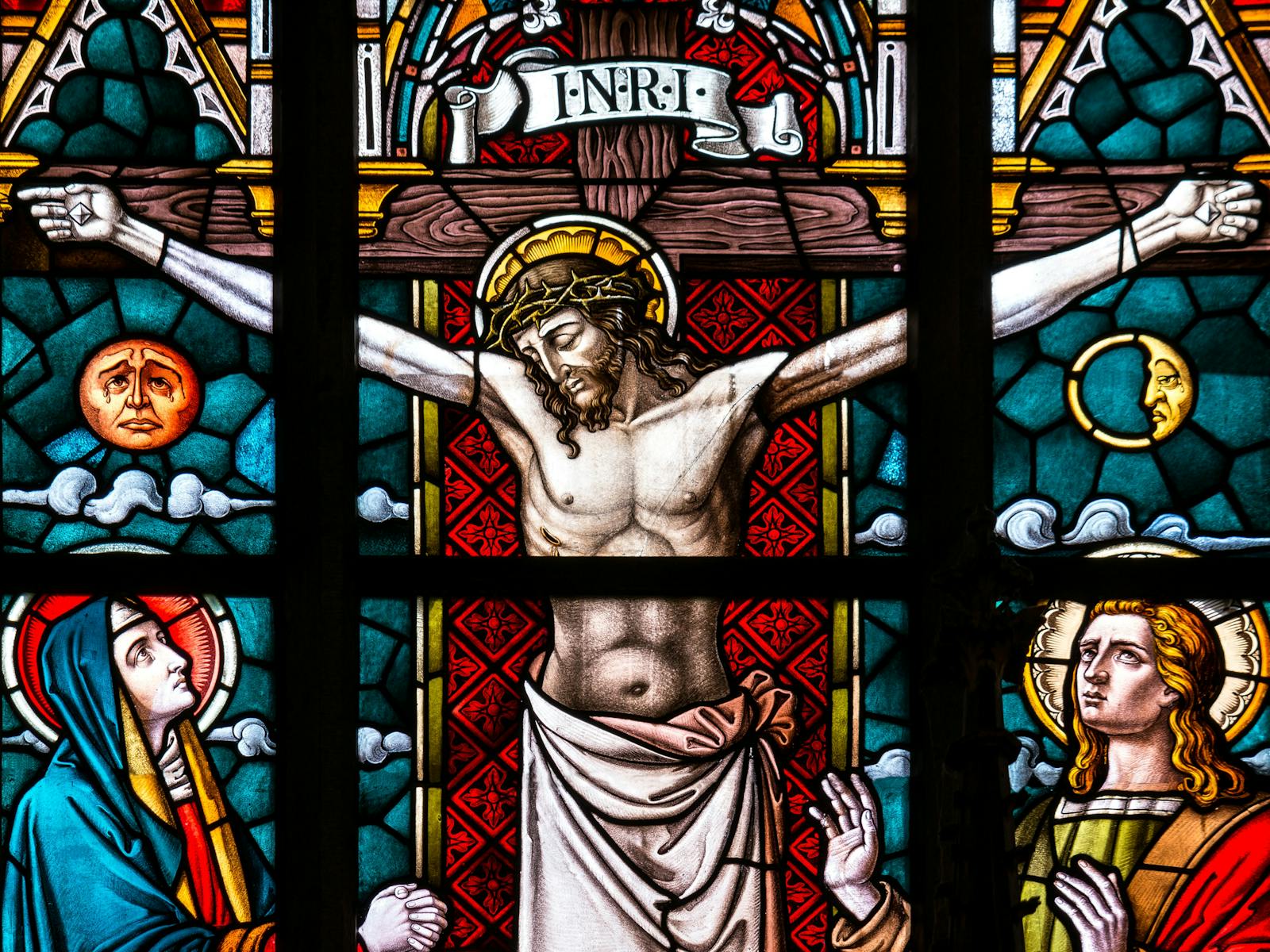Isaiah 33 is a profound chapter that unveils Jesus in prophetic symbolism and presents a compelling vision of the Messianic promise. Its timeless insights and enduring significance continue to resonate with believers, offering a rich tapestry of themes and prophecies that illuminate God’s redemptive plan for humanity.
One of the main themes in Isaiah 33 is the portrayal of God’s expectations of leaders, particularly in the areas of government, military, and religious spheres. This comprehensive view of leadership responsibilities provides valuable insights into the moral and ethical obligations placed upon individuals in positions of authority, emphasizing the need for integrity, justice, and righteousness in governance.
Additionally, Isaiah 33 casts a vision from impending national judgment to gracious restoration and the eschatological hope of a new heaven and a new earth. This panoramic portrayal of God’s redemptive plan encapsulates the transformative power of hope and the enduring nature of His promises, offering a profound vision of restoration and renewal that continues to inspire and encourage believers across different historical and cultural contexts.
The multifaceted nature of Isaiah 33’s themes and prophecies underscores the rich tapestry of its teachings and their profound implications for believers. By delving into the intricate dynamics of leadership, casting a vision of redemption and restoration, and employing prophetic symbolism to convey profound truths about God’s redemptive plan, Isaiah 33 offers a comprehensive view of its enduring significance and timeless relevance for individuals seeking spiritual guidance and inspiration in their faith journey.
Relevance of Isaiah 33 to Contemporary Life
The teachings in Isaiah 33 continue to hold significant relevance in today’s world, offering timeless principles that provide guidance and wisdom for navigating various societal and personal challenges. One of the key themes in Isaiah 33 is the expectation of leaders in different spheres of influence, including government, military, and religious institutions. This theme resonates with contemporary issues related to ethical leadership, accountability, and the responsibilities of those in positions of authority. By examining the principles outlined in Isaiah 33, individuals and communities can gain valuable insights into fostering ethical leadership and addressing the challenges of governance in the modern world.
Furthermore, the chapter’s focus on issues such as exploitation and marginalization remains pertinent in the context of current societal dynamics. The prevalence of social injustices, economic disparities, and the marginalization of certain groups underscores the enduring relevance of Isaiah 33’s message. By shedding light on these issues, the chapter offers a framework for understanding and addressing contemporary social and economic challenges, encouraging individuals to advocate for justice and equality in their communities.
Moreover, the emphasis on trusting in the one true God and the blessings associated with peaceful and prosperous living provides a source of hope and resilience in the face of modern-day uncertainties and adversities. In a world marked by complex geopolitical tensions, economic fluctuations, and personal struggles, the message of Isaiah 33 serves as a reminder of the enduring significance of faith and trust in God. It offers a timeless perspective on finding strength and guidance in the midst of life’s challenges, inspiring individuals to seek peace, pursue justice, and trust in the providence of the one true God.
In essence, Isaiah 33 continues to resonate with the complexities of contemporary life, offering a timeless message of hope, guidance, and resilience that transcends time and space. Its enduring relevance in addressing issues of ethical leadership, social justice, and the significance of faith and trust in the face of uncertainties underscores the profound impact of its teachings on individuals and communities seeking spiritual and moral direction in the modern world.
The Significance of the Servant of the Lord in Isaiah 33
Isaiah 33 presents a profound exploration of the role and significance of the Servant of the Lord, providing valuable insights into the nature of the Messiah and the redemptive mission of Jesus Christ. The chapter’s portrayal of the Servant’s dedication to meeting unmet needs and acting as a servant of the Lord offers a compelling parallel to the Christian call to serve others. This underscores the enduring relevance of its teachings, as it resonates with the timeless principles of selflessness and compassion exemplified in the life and ministry of Jesus Christ. For example, the Servant’s sacrificial commitment to meeting the needs of others serves as a poignant reminder of the selfless love and servanthood demonstrated by Jesus during his earthly ministry, further illuminating the profound connection between the Servant’s mission in Isaiah 33 and the redemptive work of Christ in the New Testament.
Furthermore, the suffering and glory associated with the Servant of the Lord in Isaiah 33 serve as a powerful foreshadowing of Jesus Christ’s redemptive mission and the ultimate fulfillment of God’s plan for restoration. This prophetic portrayal aligns with the biblical narrative of Jesus Christ as the suffering servant who would ultimately bring redemption and restoration to humanity through his sacrificial death and triumphant resurrection. By drawing parallels between the Servant of the Lord in Isaiah 33 and the Messianic promise fulfilled in Jesus Christ, the chapter unveils a profound and timeless message of hope and redemption for believers. This not only emphasizes the enduring significance of the Servant’s role in Isaiah 33 but also provides a rich foundation for understanding the redemptive work of Jesus Christ and its profound implications for humanity.
Moreover, the Servant’s dedication to meeting unmet needs and acting as a servant of the Lord offers a compelling model for Christian discipleship and service. The chapter’s portrayal of the Servant’s selfless commitment to the well-being of others underscores the enduring relevance of its teachings, providing a timeless example of sacrificial love and compassion that continues to inspire and guide believers in their faith journey. By exploring the significance of the Servant of the Lord in Isaiah 33, individuals are invited to contemplate the profound implications of Jesus Christ’s redemptive mission and the enduring impact of his ministry on the lives of believers across different historical and cultural contexts.
Prophetic Symbolism and Messianic Promise
Isaiah 33 employs powerful prophetic symbolism to convey profound truths about God’s redemptive plan and His unwavering love for His people. One striking example is the imagery of the delightful vineyard, which symbolizes God’s care and protection for His people despite their rebellion and sin. This symbolism not only illustrates God’s faithful love but also serves as a poignant reminder of the promise of restoration and redemption for those who turn back to Him. The vineyard imagery in Isaiah 33 encapsulates the cyclical nature of God’s relationship with His people, their disobedience, the resulting judgment, and the ultimate offer of grace and restoration, foreshadowing the redemptive work of Jesus Christ in the New Covenant.
Furthermore, Isaiah 33 unveils Jesus in the prophetic symbolism, providing a profound connection between the chapter’s imagery and the Messianic promise. Through the rich symbolism of the delightful vineyard and other prophetic elements, the chapter offers a deeper understanding of Jesus’ role as the ultimate source of restoration and redemption for humanity. This connection between the prophetic symbolism in Isaiah 33 and the person of Jesus Christ underscores the enduring significance of the chapter’s message for believers, inviting them to contemplate the profound implications of the Messianic promise in their faith journey. By delving into the prophetic symbolism of Isaiah 33, readers gain valuable insights into the redemptive work of Jesus Christ and the enduring significance of God’s promise of restoration and renewal, which continues to resonate with believers today.
In addition to the imagery of the delightful vineyard, Isaiah 33 employs various other symbols and metaphors to convey profound spiritual truths and insights into God’s redemptive plan. The chapter’s use of imagery, such as the portrayal of God as a protector and guardian of His people, serves as a powerful reminder of His unwavering love and commitment to the well-being of humanity. These symbols not only enrich the chapter’s overarching themes but also offer a compelling vision of hope and redemption, inspiring individuals to anchor their faith in the transformative power of God’s promises.
Moreover, the chapter’s prophetic symbolism not only captures the cyclical nature of God’s relationship with His people but also serves as a poignant reminder of the enduring nature of His redemptive plan. By exploring the multifaceted symbolism in Isaiah 33, readers are invited to embark on a journey of discovery that unveils the layers of meaning within the chapter, ultimately illuminating the profound significance of its enduring message and its transformative impact on believers seeking spiritual guidance and inspiration.
Commentary and Interpretations
In exploring the rich tapestry of commentaries and interpretations of Isaiah 33, it becomes evident that diverse perspectives contribute to a deeper understanding of the chapter’s symbolism, prophecies, and the role of the Servant of the Lord. For example, some scholars have delved into the historical context of the chapter, shedding light on the socio-political dynamics that influenced the prophetic message. This historical lens provides valuable insights into the challenges faced by the ancient Israelites and the enduring relevance of Isaiah 33’s teachings in navigating similar challenges in contemporary society.
Moreover, the replacement of Israel with the Church in certain interpretations reflects the evolving nature of theological discourse and the dynamic ways in which believers engage with the text. This shift in interpretation sparks meaningful conversations about the continuity and discontinuity between the Old and New Covenants, emphasizing the profound implications of Isaiah 33 for the Christian faith and the fulfillment of Messianic promises in Jesus Christ. Furthermore, these varied perspectives highlight the ongoing dialogue within the scholarly community and the vibrant exchange of ideas that enrich the study of Isaiah 33, offering a mosaic of insights that collectively deepen our appreciation of its enduring significance and relevance for believers across different historical and cultural contexts.
Additionally, various commentaries and interpretations of Isaiah 33 not only showcase the richness of biblical scholarship but also underscore the multifaceted nature of the chapter’s themes and prophecies. By engaging with diverse perspectives, readers are invited to embark on a journey of discovery that unveils the layers of meaning within Isaiah 33, ultimately illuminating the profound significance of the chapter in revealing God’s redemptive purposes and the central role of Jesus Christ in fulfilling the Messianic promise.
Furthermore, commentaries and interpretations of Isaiah 33 offer valuable insights into the enduring impact of its teachings, shedding light on the multifaceted nature of its themes and prophecies. By delving into diverse perspectives and engaging with scholarly discourse, readers gain a deeper appreciation of the rich tapestry of biblical scholarship and the profound implications of Isaiah 33 for believers across different historical and cultural contexts. This multifaceted exploration of commentaries and interpretations not only enriches our understanding of the chapter’s enduring significance but also invites individuals to contemplate the transformative power of its message in their personal faith journey.
God’s Plan for Redemption and Restoration
In Isaiah 33, the interplay of judgment, grace, and hope casts a vision of God’s plan for redemption and restoration, emphasizing the importance of holding fast to God’s covenant and preparing for the coming glory. This portrayal of God’s redemptive plan provides a comprehensive view of His enduring love and commitment to the well-being of humanity, offering a vision of hope and renewal that continues to inspire and guide believers in their faith journey. The chapter’s emphasis on trusting in God and turning away from idols serves as a timeless reminder of the transformative power of faith and the enduring significance of God’s promises for those who seek spiritual guidance and inspiration.
Moreover, the chapter gives a clear picture of God’s expectations of leaders, particularly in the areas of government, military, and religious spheres, offering timeless principles applicable to various aspects of life. This comprehensive view of leadership responsibilities sheds light on the moral and ethical obligations placed upon individuals in positions of authority, providing valuable insights into fostering ethical leadership and addressing the challenges of governance in the modern world. By delving into the intricate dynamics of leadership, Isaiah 33 offers a timeless perspective that continues to resonate with individuals seeking moral and spiritual direction in their personal and professional lives.
Furthermore, Isaiah 33 emphasizes the importance of trusting in God and turning away from idols, providing a comprehensive view of its themes and prophecies and their enduring relevance. By offering a compelling vision of redemption and restoration, the chapter becomes a source of inspiration and encouragement for believers, inviting them to anchor their faith in the transformative power of God’s promises and the enduring significance of His redemptive plan. This emphasis on trust and faith in the one true God offers a timeless perspective that continues to provide spiritual guidance and inspiration for individuals seeking hope and resilience in the face of life’s challenges.
Faith and Trust in the Workplace
Isaiah 33 not only delves into the spiritual realm but also provides profound insights into navigating challenges and uncertainties in professional settings, particularly in the contrast between faith in God and fear in the workplace. The chapter emphasizes the importance of trusting in God and turning away from idols, shedding light on the timeless relevance of its principles to various aspects of life, including the workplace. For example, the teachings of Isaiah 33 offer practical guidance on fostering trust in God amidst workplace challenges, emphasizing the enduring relevance of its principles for individuals in various professional spheres.
Moreover, the contrast between faith in God and fear in the workplace serves as a poignant reminder of the transformative power of faith and the enduring significance of trusting in God amidst professional challenges. By drawing parallels between the spiritual principles articulated in Isaiah 33 and the complexities of modern work environments, individuals gain valuable insights into fostering trust and resilience in the face of uncertainties, offering a timeless perspective that continues to inspire and guide believers in their professional lives.
Furthermore, the teachings of Isaiah 33 provide practical guidance for individuals seeking to apply its timeless principles to their daily lives, offering insights that resonate with the complexities of modern existence. Through its vivid portrayal of God’s expectations of leaders and the call to trust in Him, the chapter becomes a source of inspiration for navigating personal challenges and uncertainties. By drawing from the enduring promises and principles articulated in Isaiah 33, individuals can find a source of hope and perseverance as they navigate the intricacies of their personal and professional lives.
#Isaiah33 #MessianicProphecy #GospelReflections #PropheticVision #SymbolisminScripture #JesusReign #SalvationinIsaiah #RestorationinChrist #KingdomofGod #JesusSovereignty #RighteousnessRevealed #BiblicalProphecy #PropheticInsights #JesusKingship #MessianicHope #GospelFulfillment #PropheticSymbolism #EternalPeace
Ultimate Restoration and Redemption
Isaiah 33 not only serves as a prophetic revelation of the ultimate restoration and redemption in the New Covenant through Jesus Christ but also underscores the profound implications of God’s redemptive purposes. The chapter’s portrayal of the Messianic promise and its ultimate fulfillment through Jesus Christ offers a compelling insight into the enduring significance of its message and its transformative impact on believers. Through the vivid imagery and symbolism in Isaiah 33, the promise of restoration and redemption is intricately woven into the fabric of the text, pointing to the ultimate fulfillment of God’s redemptive plan in Jesus Christ.
Moreover, Isaiah 33 encourages hope and perseverance based on the promises within its verses, providing a compelling vision of the ultimate restoration and redemption through Jesus Christ. This profound hope is not merely a distant concept but a tangible reality that speaks to the hearts of believers, inspiring them to embrace the transformative power of God’s redemptive work. The chapter’s emphasis on the enduring nature of God’s promises and the ultimate fulfillment of His redemptive purposes through Jesus Christ serves as a source of strength and encouragement for individuals navigating the complexities of life. By highlighting the significance of the Messianic promise, Isaiah 33 illuminates the pathway to ultimate restoration and redemption, fostering a deep sense of faith and assurance in the hearts of believers as they journey towards the fulfillment of God’s redemptive plan in Jesus Christ.
In essence, Isaiah 33 stands as a testament to the enduring hope and transformative power of God’s redemptive promises, unveiling a compelling vision of ultimate restoration and redemption through Jesus Christ. The chapter’s portrayal of the Messianic promise and its implications for believers not only offers profound insights into the enduring significance of its message but also serves as a guiding light, inspiring individuals to anchor their faith in the ultimate fulfillment of God’s redemptive plan in Jesus Christ.


